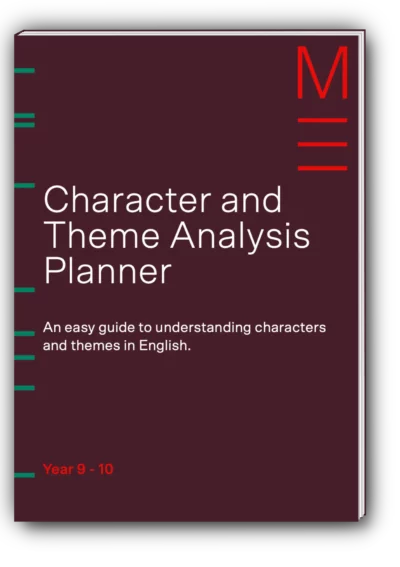Welcome to Matrix Education
To ensure we are showing you the most relevant content, please select your location below.
Select a year to see courses
Learn online or on-campus during the term or school holidays
Learn online or on-campus during the term or school holidays
Learn online or on-campus during the term or school holidays
Learn online or on-campus during the term or school holidays
Learn online or on-campus during the term or school holidays
Learn online or on-campus during the term or school holidays
Learn online or on-campus during the term or school holidays
Learn online or on-campus during the term or school holidays
Learn online or on-campus during the term or school holidays
Learn online or on-campus during the term or school holidays
Select a year to see available courses
Science guides to help you get ahead
Science guides to help you get ahead
Discover the top 5 literary themes for Year 9-10 English and learn how to analyse them like a pro.

Join 75,893 students who already have a head start.
"*" indicates required fields
Related courses

Join 8000+ students each term who already have a head start on their school academic journey.
Raise your hand if you’ve ever stared at your English text and thought, “What on earth is this story trying to say?”
You’re not the only one. Analysing English texts can feel like decoding a secret language, especially when all you want is to write a solid essay and get good marks. But without understanding a text’s deeper ideas, it’s hard to know what to say or how to say it.
The good news is that once you know what literary themes to look for (and how to write about them), analysing texts becomes much easier.
In this article, we’ll break down the top five literary themes you’ll encounter in Year 9 and 10 English and show you exactly how to analyse them. You’ll be well-prepared to boost your marks and write high-scoring responses!
Table of contents:
A literary theme is the central idea or message that the author wants readers to think about.
It’s not just what happens in the story but what the story really means on a deeper level.
Themes often reflect shared human experiences or ideas about life, society, or human nature. For example, themes like friendship, courage, or justice are aspects of life we all experience.
Think of it this way: the plot is what happens; the theme is what it’s about.
Knowing how to identify and discuss themes is a valuable skill. It helps you connect with what the author is trying to say and shows you’ve thought about the story on a deeper level.
Quick definition: A literary theme is the main idea or deeper message in a story. It helps readers understand what the author wants them to think about.
As part of the Year 9 and 10 English curriculum, you will be expected to think more analytically about stories. This is where literary themes come in. Studying themes helps you see what’s beneath the surface. What is the author really trying to say about life, society, or human nature?
For example, themes like justice, friendship, or identity aren’t just random ideas. They guide what happens in the story and affect the characters’ choices.
Plus, when you write about themes in your essays, you show your teacher that you really understand the text; not just what happened, but why it matters. This is a key skill for getting higher marks in English.
Now that you know why you need to learn about literary themes, let’s look at the top five most important literary themes.
HSC writing strategies from expert English teachers
Band 6 resources to get you exam-ready. Join the 96% of our students that have improved their marks.
Here are five common themes in literature that you may see in your Year 9 and Year 10 texts. Each one is followed by examples and ideas on how to analyse the writing themes.
What it’s about: This theme explores characters figuring out who they are and where they belong in the world.
Text examples: Looking for Alibrandi by Melina Marchetta and The Outsiders by S.E. Hinton both focus on young characters struggling with identity and finding their place.
How to analyse: Look at how the characters’ actions and decisions reveal shifts in who they think they are. Notice how their relationships or challenges make them question who they want to be.
What it’s about: This theme focuses on characters who face difficult situations and find the strength to keep going.
Text examples: In To Kill a Mockingbird by Harper Lee, courage is a huge theme as characters stand up for what’s right.
How to analyse: Think about what the author is saying about courage. How do characters show bravery? How do their courageous actions affect other characters?

What it’s about: This theme explores who has power and who doesn’t. It’s about the use and misuse of power and its effects on people and society.
Text examples: George Orwell’s Animal Farm uses animals on a farm to show how power can corrupt and lead to oppression.
How to analyse: Look at which characters have power (authority or control) and how they use it. Think about whether the author is sending a message about what happens to society when power is abused.
What it’s about: This theme explores the bonds between friends and the ways those bonds help characters through tough times.
Text examples: The friendship in Of Mice and Men by John Steinbeck shows loyalty, sacrifice, and the choices friends sometimes have to make.
How to analyse: Notice how the author uses friendship to show deeper ideas like survival or morality. How does loyalty affect the characters’ actions and decisions? Look for moments where friendship is tested or is needed for survival.
What it’s about: This theme focuses on the characters’ struggles with what is fair and unfair and how they try to set things right.
Text examples: To Kill a Mockingbird is a well-known example where the characters deal with racial injustice and moral integrity.
How to analyse: Look at how the characters respond to unfair situations. What is the author trying to say about justice? Does the setting and era influence how justice is shown?
To help with your theme analysis, download our free Character and Theme Analysis Planner. It has tips and templates for simplifying characters, themes, and events to make your analysis clear and organised.
An easy guide to understanding characters and themes in English. Fill out your details below to get this resource emailed to you. "*" indicates required fields
Free Year 9-10 Character and Themes Analysis Planner

Free Year 9-10 Character and Themes Analysis Planner
If you’re aiming for high marks, go beyond just finding the theme. Think about how the author shows it. More importantly, think about why the theme is there. Here’s a simple guide:
To uncover a theme, try looking beyond the obvious ideas. Pay attention to underlying patterns or messages. Here are some ways to identify themes, including ones that other students might overlook:
Now that you’ve identified the theme (or themes), you’re ready to move on to steps 2-5 and build a strong analysis for high marks.
Themes often show up in the way characters grow or change.
For example, in To Kill a Mockingbird, Scout starts out innocent but learns about racism and injustice, reflecting the theme of racial prejudice.
Track character growth by asking yourself:
Remember, some objects or images represent big ideas in the story.
For example, in Lord of the Flies, the conch shell symbolises order, and its destruction reflects the breakdown of society.
Recurring elements like colours, objects, or phrases often hint at the theme. It’s like how light and darkness often reflect good vs. evil.
Context matters! The time and place of a story can influence a theme.
For example, you need to understand 1930s America to properly analyse the themes of racial injustice in To Kill a Mockingbird.
Sometimes the setting is the theme, like a dystopian world showing the dangers of control or oppression.
To take your analysis to the next level, connect the theme to today’s world. This can show advanced critical thinking.
Go beyond the obvious. Think about:
What message does the author want readers to think about?
How might the theme change how people see the world?
For a more comprehensive guide, check out How to Find and Analyse Themes in Texts
Making a strong theme statement shows your understanding clearly. Here are some examples:
To make your theme statement stand out, show how the theme interacts with other elements, like symbolism or character arcs. Show why the theme matters within the story and to broader society.
So there you have it! That’s everything you need to understand what literary themes are, why they matter in Year 9 and Year 10 English, and how to analyse them in a way that boosts your marks.
The more you practise analysing literary themes, the easier it gets and the more confident you’ll feel in class and during assessments.
Want to learn about literary themes and English essays from expert teachers? Try out a Matrix lesson and access inspirational teachers and comprehensive resources.
Learn with Matrix!
Join 8,000+ students learning one term ahead with expert teachers and proven Band 6 resources.
Written by Matrix English Team
The Matrix English Team are tutors and teachers with a passion for English and writing, and a dedication to seeing Matrix Students achieving their academic goals.© Matrix Education and www.matrix.edu.au, 2025. Unauthorised use and/or duplication of this material without express and written permission from this site’s author and/or owner is strictly prohibited. Excerpts and links may be used, provided that full and clear credit is given to Matrix Education and www.matrix.edu.au with appropriate and specific direction to the original content.